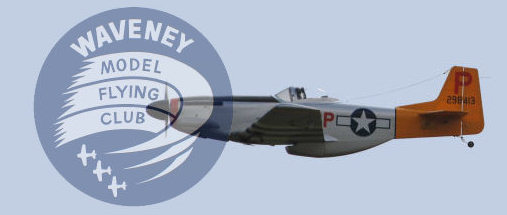How do I get started?
What do I need to buy?
What's it all going to cost me?
What does all this stuff look like?
Where is the best place to buy all this?
I want to fly a Spitfire
I suppose it takes months to build my trainer?
What exactly is this "Radio Gear"?
Can you give me any advice on building and installing the radio gear?
How do I get started?
There are a number of ways to start model flying, however most of them are somewhat expensive and can be very frustrating. It is very easy these days to walk into a model shop or even a toy shop and walk out with a plane that is almost ready to fly, but this is where the problems start. In other words, the plane may be almost ready to fly, but are you?
Before you part with your hard earned cash, visit our club and talk to the guys flying. Most clubs members will be more than happy to show you what it’s all about and give you lots of free advice. We even allow 3 free trial flights, with you taking control of the plane, albeit linked to a ‘buddy lead’ so that an instructor can take over if you get into difficulties. It is usually a good idea to arrange this in advance of any visit. If you decide that you would like to take up the hobby, it’s a good idea to join a model flying club because they can provide a structured training programme which will ensure that you don’t wreck your plane every time that you attempt to fly it. The club can also provide insurance through their membership scheme. Safe flying is vital, and most clubs have experienced instructors who will teach these safety aspects of flying, as well as the skills required to control the model. This hobby will give you years of fun and enjoyment, and as you progress, you can work towards the British Model Flying Association’s (BMFA) proficiency scheme.
What do I need to buy?
Probably the best way to start is with a trainer. This will have an IC (internal combustion) engine around about .40 cu. inches in size. (Electric versions are also available)
A transmitter is needed to control the plane and inside the aircraft will need to be a receiver and servos to operate the control surfaces (elevator ailerons etc) These usually come as a package, but can be bought separately. Of course there are quite a few makes and you need to choose one that suits your bank balance and is sufficient to take you past the learner stage.
In the UK we previously flew most models on 35MHz. Within this frequency range a specific channel needs to be chosen. This range runs between channels 55 and 90. Most people fly Mode 2 (Throttle on the left) so ensure yours is the same.
In recent years 2.4Ghz has become the norm, and we recommend that beginners buy this type of equipment. However 35 MHz is fine, perhaps you have been given a 35 MHz Transmitter and receiver. There are many cheap deals on EBay, etc..
Of course, there are other items that will need to be purchased; these include fuel, a starter, a glow stick and some method of getting fuel into the plane. Again talk to club members who are more than willing to help you out.
Many items can be purchased second hand from club members, Free ads, BMFA classifieds, eBay etc. with considerable savings.
What's it all going to cost me?
(All prices are for new items and are approximate, ..... SHOP AROUND..)
Local model shops usually offer discounts to club members, take your membership card, check what discounts are available.
4channel trainer aircraft IC (Internal combustion)
e.g. Seagull Arising star
Ripmax Nova
Seagull Boomerang
Irvine tutor
Seagull Jumper 25 |
£70
£70
£70
£72
£58 |
.40 ~.46 engine
e.g. OS Max 46 LA
Irvine 40
Thunder Tiger 42
ASP 40
.25 ~.32 engine (for Jumper)
SC32
OS Max 25LA
|
£74
£55
£42
£55
£49
£40
£69 |
Trainer Aircraft Electric
Many people are now opting for Electric power.. This is cleaner and less equipment needed.. Fuel is not required, but batteries are expensive and have a limited life.. Sorting out the best setup is not easy, but there are several trainers where all is included..
The ST Model Discovery ARTF Trainer is a good example at around £100, just need to add the cost of a receiver and a couple of LIPO batteries.. around £18 each, also a LIPO battery charger will be needed.. around £50 or so..
This is a foam model
Also the BlackHorse Trainer EP ARTF at around £88, but needs motor etc. check with Pegasus Models, Norfolk for prices |
£100
|
|
*Transmitter
e.g.Futaba 6EX 2.4 Tx (Mode 2) & R617FS Rx [ suitable for FW and heli ] 6 model memory
This includes the Transmitter, battery and one receiver |
£140 |
| *Receiver |
£20 ~ £50 |
| *Receiver battery pack |
£10 |
| *Servos |
£8 each ( x4 = £32) |
| *Battery Charger for transmitter and receiver batteries |
£10 |
* or usually cheaper purchased as a complete set |
£175 |
| Fuel pump |
£10 |
| 12v battery |
£20 |
| Starter motor |
£25 |
| Flight box |
£20 |
| Insurance |
£32 |
| Club Membership ........ Click here for current Waveney MFC fees |
£52 |
What does all this stuff look like?
A typical Transmitter "set", showing Futaba 6EXA, receiver, 4 servos, battery, charger, switch harness.
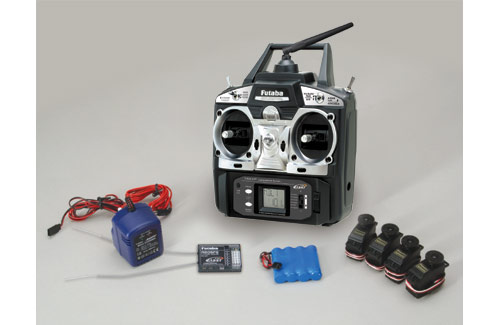
-
- A typical trainer, the Ripmax Nova
-
-
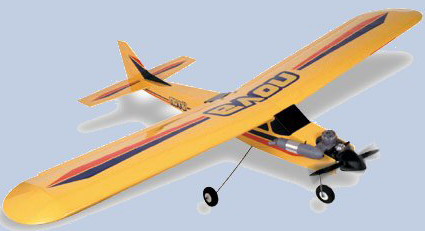
-
-
And the ever popular Seagull Arising Star

-
- An OS max 46LA 2-stroke engine
-
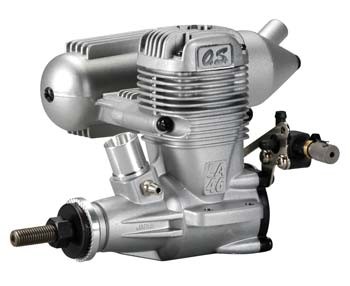
-
A typical Flight Box with inclusive power panel, fuel pump and 12V battery
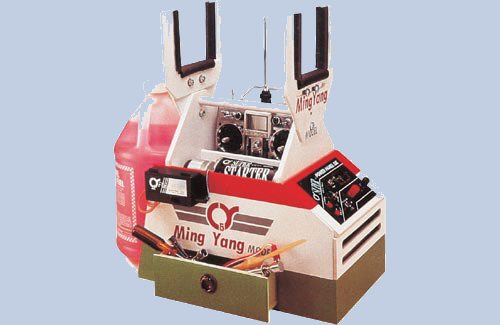
-
A typical 12 volt engine starter

Glow plug driver and charger
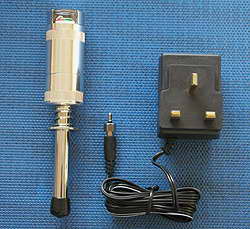
12 volt 7 AH Gel battery
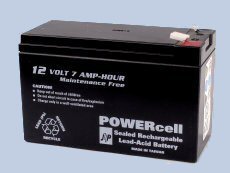
And you will need a Gel battery charger, similar to this.
Don't use a car battery charger (The current is usually too high)
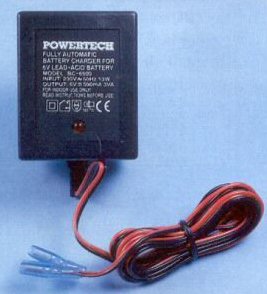
Where is the best place to buy all this?
-
You can visit the on-line shops or Local Model shops on our Links page.
Also, consider used equipment from club members, BMFA classifieds, free-ads, eBay etc.
-
I want to fly a Spitfire
There is nothing nicer than seeing a scale Spitfire in flight. However it is not an easy plane to learn on due to its design. The high wing trainer with its flat bottom wing and dihedral is designed to fly almost "hands off". In other words, if you let go all the "sticks" it will automatically seek to fly a level flight pattern. Also the Trainer is more forgiving if the landing is less than perfect
I suppose it takes months to build my trainer?
No, actually, most trainers are supplied in ARTF form (almost ready to fly) In other words the box comes with the fuselage, wings, and tail already built and covered. All you have to do is join the two wing halves together, glue the tail on, screw the undercarriage on, and add the engine and Radio gear.
What exactly is this "Radio Gear"?
-
It consists of the receiver, aerial, battery, on/off switch, aileron servo, throttle servo, elevator servo, rudder servo, as shown below.
-
-
This example shows a 35Mhz system which uses a long aerial. 2,4Ghx aerials are much smaller, and are positioned at right angles
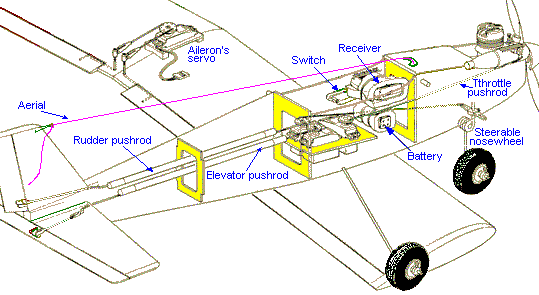
Can you give me any advice on building, and installing the radio gear?
Building Advice
- Take your time.
- Read the instructions, then read them again. Rush it, make a mistake and you could well end up taking home a bag of bits.
- If you have any problems SEEK ADVICE. Use the recommended glues, if you're not sure, get some scraps of the bits to be glued and test them first.
- Cyano, polyester resins and glues like Evo-Stik can attack / eat some plastics & foams.
- Before you glue, dry assemble the parts to check that they will really go together. Better to find out now than when the glue is on the wood..... If you're already a confident builder and/or good with your hands, then use cyano for general jobs. If you're not, then use some of the other glues such as PVA, Wood Glues (Waterproof), epoxies and general purpose modelling glues.
Installing Radio gear
- Wrap the receiver in foam to stop engine, airframe and flight shocks being transferred to the sensitive electronics.
- Install the receiver behind the battery. This minimises impact damage due to the battery moving forward and hitting the receiver during heavy landings/arrivals
- Fit the small brass bushes into the rubber grommets. These help stop you tightening the screws too much
- Use screws that are long enough for the job
- Use screws not glue to hold servos in place (There are some exceptions, i.e. ultra lightweight planes)
- Protect the aerial with a small length of silicon fuel tube where it exits the fuselage. (35Mhz)
- 2.4ghz aerials need to be at right angles
- Install the switch in such a position that it doesn't get swabbed in the exhaust gunk and cannot be switched on / off accidentally whilst carrying the model.
- Check that the servos are not stalling whist in use and have full travel without obstruction from other nearby items. a Stalled servo, a throttle servo stalled near to full travel, for instance, can flatten a fully charged receiver pack in minutes.
- Never, Never, cut the aerial or coil it up. If necessary, leave it dangling out the rear of the plane
|
